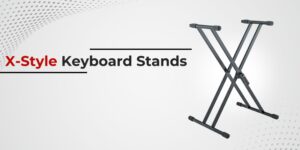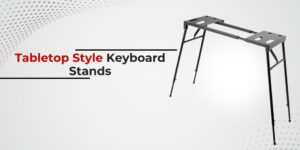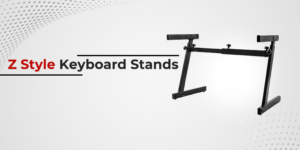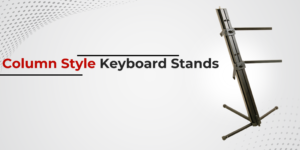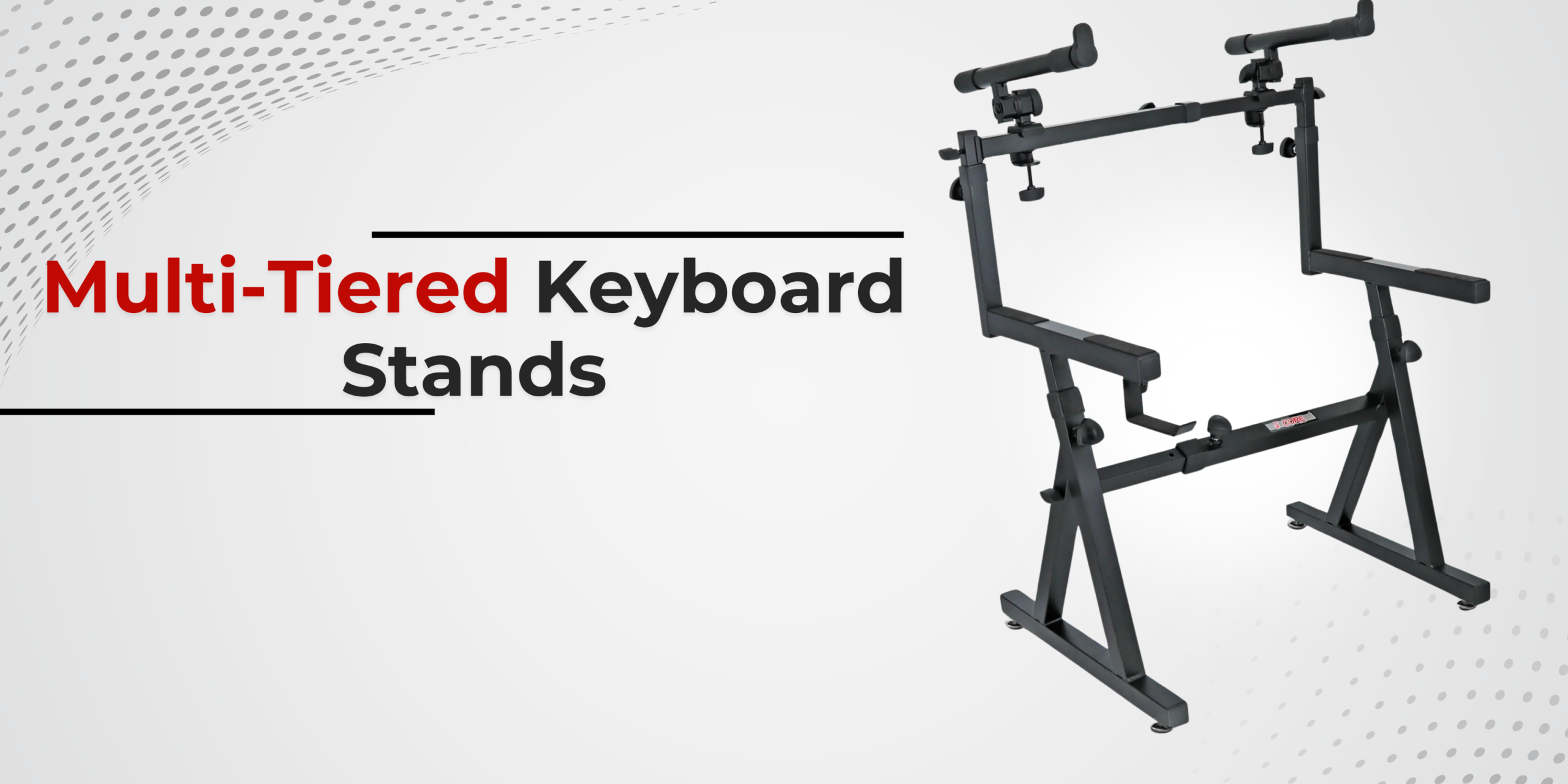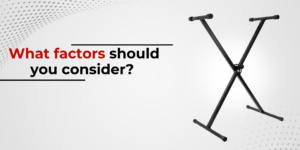Many beginner musicians overlook the key factor of a keyboard stand, however, it is just as pertinent and relevant as anything else in relation to playing and practicing. With the progress of technology and the development of music instruments, the requirements for the design of keyboard stands are increasing constantly. A good keyboard stand combines comfort with stability and enhances the overall playing experience. All keyboard instruments have features and options to set up, and these should be known to new users of the instrument.
This guide intends to shed light on the criteria that should be analyzed when selecting a keyboard stand, especially considering contemporary matters and possible future changes.
Sorts of Keyboard Stands:
Keyboard stands are stratified into different styles, with each style designed to suit a particular set of needs or environments. Presented below are the most widely used types of keyboard stands.
X-Style Stands:
Considered the most portable and least expensive, the X-style keyboard stands tend to be some of the most frequently chosen designs. With collapsible legs that take the form of an ‘X’, these stands are not only lightweight but easy to transport. In comparison to other stands, their main disadvantage is often stability, particularly when used with heavier keyboards. Most include adjustable height settings, although there is little customization possible.
Tabletop Stands:
Recommended for musicians who are short on space or those who want a minimalistic aesthetic, the tabletop keyboard stands sit on existing surfaces, such as desks or tables, rather than the floor. They are also common for compact keyboards or mini synthesizers. Though they leave little room to adjust in terms of height or width, their slim profile is a favorite among home studios.
Z-Style Stands:
These Z-style keyboard stands had strong, zigzag-shaped legs, which made them more stable under heavier instruments, meaning they were generally more reliable overall. They are also height and width adjustable, so they will accommodate a wide variety of keyboards. Though slightly heftier than X-style stands, they are more robust and, for that reason, more popular for live performances.
Column-Style Stands:
Column-style keyboard stands have distinct vertical support columns that give them a professional look along with great stability. They tend to be used mostly in permanent studio setups and have less portability due to being heavier. However, they make up for it by having better weight distribution. Customization is possible for height and angle with most of them.
Multi-Tiered Stands:
Multi tiered keyboard stands are used for musicians with a lot of keyboards or controllers, as these stands come with two or three tiers for stacking the instruments vertically. While they do consume more floor space, they enhance the efficiency for layered performances.
What factors should you consider?
So extensive criteria has to be set to make sure the most appropriate stand is selected for personal needs.
Stability and Weight Capacity:
A stand’s stability is the number one priority, especially when a majority of keyboardists will use a slightly heavier digital piano or workstation. Always check weight capacity specifications to prevent structural failure. Stability is demonstrated through reinforced joints, non-slip padding, and wide leg spans.
Portability and Storage:
Portability is top of the list for musicians who perform live or practice at multiple venues. The features that allow for easy transportation include foldable designs, lightweight materials, and carrying cases. On the other hand, storage for permanent setups may be best suited for heavier, more stationary stands.
Adjustability and Ergonomics:
To ensure good posture through long periods of practice, it is best to have adjustable height and tilt mechanisms. If you can customize each of these options, the keyboard stand prevents strain and injury. Again, locking mechanisms must be checked to ensure that the settings are not compromised when they are being used.
Compatibility and Versatility:
It is essential to ensure that the stand is compatible with different keyboard sizes and models. Universal clamps or other versatile mounting solutions can be a real plus for players who have multiple instruments. Also, expandable stands (with additions like microphone holders or trays for sheet music) provide functional value.
Aesthetics and Design:
They should neither minimize functionality, but they are also nothing to be ignored further aesthetically. Clean lines and modern aesthetics are becoming more in-demand, particularly for studios or stage events. Colors and textures that complement other gear help make a visually appealing stand.
Moving forward: New Keyboard Stand Trends of 2025
New materials and technology have also played their part in the design of keyboard stands in 2025. Here are the key trends that are shaping the market.
Smart Technology Integration:
Sensors and Bluetooth technology are also commonplace in smart stands. Such a stand can sync with mobile apps to monitor posture, automatically adjust height, or give maintenance reminders. Built-in cable management systems are also being incorporated, decreasing clutter.
Sustainable Materials:
Eco-friendly manufacturing techniques have resulted in recycled aluminum, bamboo, and biodegradable composites. Such materials are both environmentally sustainable and durable, lightweight, and appealing to ethically minded consumers.
Custom and Modular Designs:
Modular keyboard stands that allow users to add or remove tiers, extensions, and accessories have become commonplace. This modularity allows musicians to prepare their setup for each gig without having to buy multiple stands.
Seamless Integration with VR and AR Configurations:
With virtual and augmented reality becoming more integral to the music production process, stands are being designed with mounting points for a VR controller or AR display units. This trend has advised creators that combine traditional instrumentation with immersive technology.
Conclusion
In 2025, due to the stability and adjustability of these, careful consideration must be given which would just call for the appropriate keyboard stand From smart features and sustainable materials to modular designs—these are all innovative solutions that help meet beginners’ current and potential future needs. Musicians will leverage personal preferences and trends in the industry, allowing them to make choices that will ultimately improve their playing experience and assist in their artistic endeavors.


